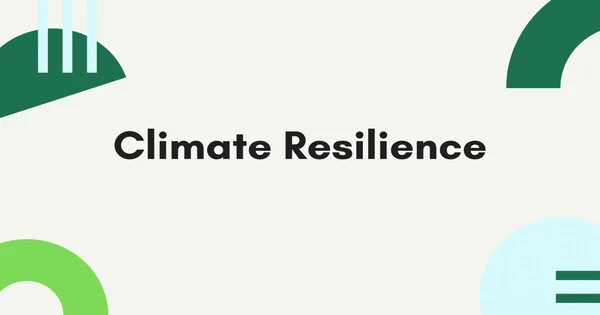The ability of individuals, communities, systems, and countries to anticipate, prepare for, respond to, and recover from the adverse effects of climate change is referred to as climate resilience. It entails adapting to changing climate conditions and reducing vulnerabilities that can result in significant economic, social, and environmental losses.
The primary goal of increasing climate resilience is to reduce the vulnerability of communities, states, and countries to the many effects of climate change. Climate resilience efforts include social, economic, technological, and political strategies being implemented at all levels of society. From local community action to global treaties, addressing climate resilience is becoming a priority, although it could be argued that a significant amount of the theory has yet to be translated into practice.
Climate resilience is linked to efforts to adapt to climate change. It aims to reduce climate change vulnerability and takes climate justice and equity into account. Climate-resilient infrastructure, climate-resilient agriculture, and climate-resilient development are examples of practical implementations. Most objective approaches to measuring climate resilience employ fixed and transparent definitions of resilience and allow for comparisons of different groups of people using standardized metrics.
Key aspects of climate resilience include:
- Adaptation: Climate-resilient entities develop strategies and practices to adapt to the changing climate. This can involve modifying infrastructure, land use planning, agriculture, water management, and other systems to better withstand climate-related stresses such as extreme weather events, rising temperatures, and changing precipitation patterns.
- Risk Assessment: Identifying vulnerabilities and assessing potential risks is crucial for building resilience. This involves understanding the specific hazards a region might face due to climate change and analyzing the potential impacts on various sectors such as agriculture, water resources, public health, and infrastructure.
- Mitigation: While resilience is primarily concerned with adapting to climate impacts, it is also critical to maintain efforts to mitigate climate change. Mitigation entails lowering greenhouse gas emissions to slow the rate and magnitude of climate change, thereby lowering the severity of the impacts that must be addressed.
- Capacity Building: It is critical to build the capacity of communities, governments, and organizations to manage and respond to climate-related challenges. This includes equipping people with the knowledge, skills, and resources they need to make informed decisions and take appropriate action.
- Infrastructure and Technology: Building and improving infrastructure to withstand climate impacts is a critical component of resilience. This could include designing buildings and transportation systems to withstand extreme weather, developing water management systems to deal with shifting rainfall patterns, and leveraging technology to improve monitoring, early warning, and response systems.
Building climate resilience is a continuous process that necessitates collaboration, long-term planning, and a dedication to sustainability. As climate change continues to pose significant challenges, efforts to improve resilience are becoming increasingly important in order to reduce the negative effects on societies, economies, and ecosystems.
















